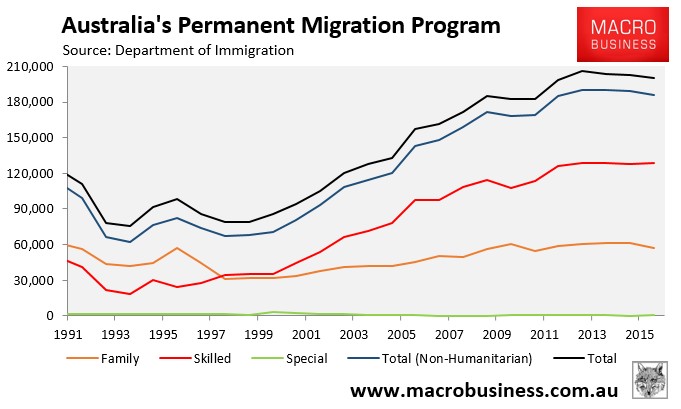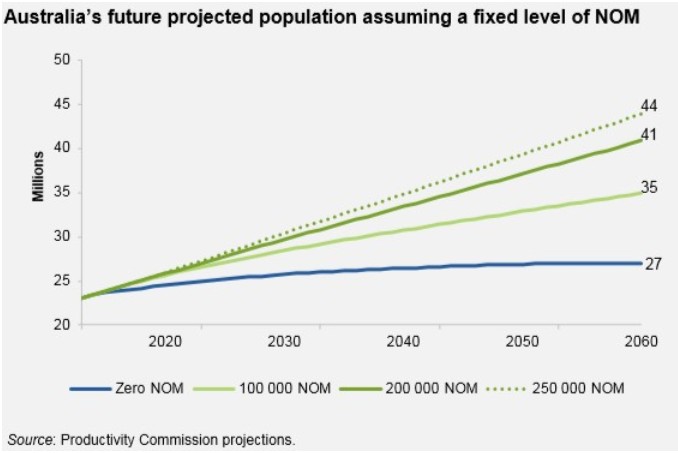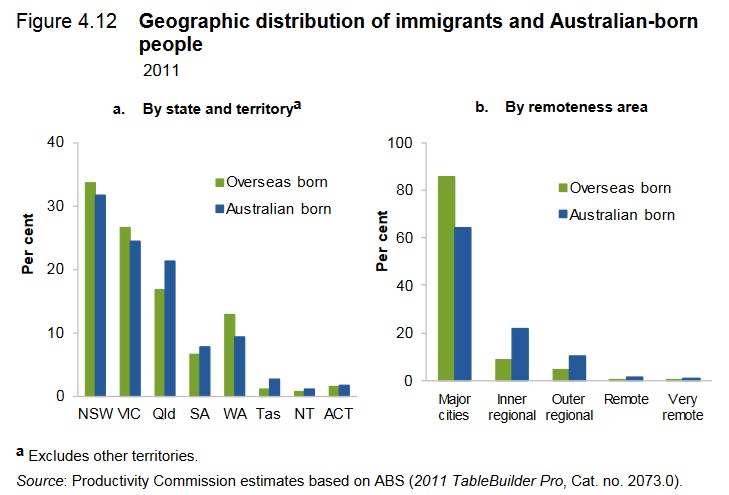In 2003 I arrived at the Australian Treasury to begin my career as an economist.
Upon arriving at Treasury, I was introduced to the “three P’s” framework by then Treasury Secretary, Dr Ken Henry.
According to this framework, we were told that Australia must: 1) boost productivity; 2) raise workforce participation; and 3) increase the population via skilled migration, if the nation was to continue to enjoy rising living standards.
I never bought in to the three P’s framework, instead prefering that it was pared back to the “Two Ps” of productivity and participation.
Population growth’s impact on living standards is highly questionable. While it certainly does raise headline GDP (more inputs equals more outputs), there are significant doubts over whether it raises per capita GDP, while also placing greater pressure on the environment, pre-existing infrastructure and housing, as well as Australia’s fixed endowment of mineral resources (see here for a detailed run-down of the issues).
Last year, it seemed that Ken Henry had his Damascus moment penning the following in July warning about Australia’s excessively high population (immigration) growth [my emphasis]:
Here are a few things most Australians know. They know that the budget is unsustainable and that a government that refuses to address the quality of the tax system is not going to fix the problem.
They know our population is growing at a rate that exceeds the capacity of traditional models of planning, building and pricing access to the nation’s infrastructure and housing. They know that productivity growth will not be boosted significantly without a substantial contribution from economic infrastructure and without further investments in education.
Ken Henry then doubled down in December warning us that Australia’s break-neck population growth will crush living standards unless Australia’s governments embark on a massive infrastructure building program:
The Australian population is growing by something like 400,000 a year. Think of it: a new Canberra every year between now and the end of the century. Or, put it this way, every five years building a brand new city from scratch in Australia for 2 million people.
Or put it this way: building a whole new city the size of Melbourne every decade between now and the end of the century…
My observation in Sydney and Melbourne today, is that people already think, with very good reason, that the ratio of population to infrastructure is too high. But we have set ourselves on a journey that implies an increase in that ratio. An increase in that ratio that is associated with more congestion, longer commute times to work, increasing problems with respect to housing affordability…
That means that we have to take an interest in traffic congestion, housing affordability, urban amenity and environmental amenity, including climate change mitigation and adaptation…
Today, Ken Henry has shifted the narrative, telling Australia’s governments to simply shift population growth to the regions. From The Canberra Times:
National Australia Bank chairman Ken Henry says the nation faces an “extraordinary” economic opportunity to develop regions outside the capital cities, as the bank bets on a long-term lift in rural Australia…
Dr Henry, a former Treasury Secretary to Labor and Coalition governments, conceded many people only saw the “downside” of higher population growth, such as congestion and expensive housing.
“We’re in a period of much stronger population growth now, and it’s going to go on for decades,” he told BusinessDay, speaking from Mildura alongside chief executive Andrew Thorburn.
Australia had typically failed to plan its infrastructure needs, he said, pointing to inadequate investment during the post-war “baby boom”.
But if our burgeoning population is properly supported by infrastructure investment, he said a bigger Australia could be a historic chance to develop regional areas.“There is an unprecedented opportunity for many regions in Australia now if they’re backed by the right expertise, if they’re backed with the right infrastructure, if they’re backed with the right access to finance from banking partners who understand them, and understand their future, and who are committed to their community,” he said.
If these things occurred, Dr Henry said, “I think there’s an extraordinary development opportunity here for Australia”.
NAB is the country’s biggest agricultural and business lender, and the comments come as it looks to cement its position in these markets, after in recent years selling poorly performing overseas banks.
Ken Henry the policy doyen would have been honest enough to acknowledge that the driver behind the “much stronger population growth now” and for decades to come is the federal government’s mass immigration program, which was ramped-up massively from the early-2000s, as shown in the next chart:

It is this mass immigration program that has Australia’s population projected to grow to around 41 million people mid-century – 14 million more than would occur under zero net overseas migration:

Ken Henry the policy doyen would have acknowledged that Australia’s immigration intake is now far too high and should be at least halved to take the pressure off infrastructure and housing.
Ken Henry the policy doyen would also have acknowledged that Australia has attempted to decentralise for a century without success (other than the creation of Canberra), and the hope of shifting Australia’s population growth to the regions is little more than a pipe dream.
The fact is, migrants have always chosen to settle in the big cities of Melbourne and Sydney, rather than the regions:

So what makes Ken Henry believe that migrant settlement patterns will magically change in the future?
Of course, we are not dealing with Ken Henry the policy doyen anymore, but Ken Henry the bank lobbyist. And what better way is there to lazily boost bank profits than to keep the throttle on mass immigration and endless dumb population growth, in the process perpetually growing NAB’s customer base?
It’s time that everybody stops listening to Ken Henry. He is now just another shameless rent-seeker for the growth lobby.

